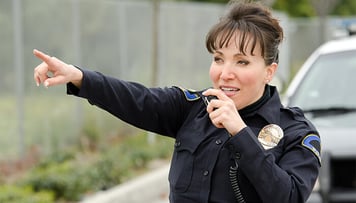Blog
5 Advantages of Combining CAD and Command & Planning Software
Today’s increasingly complex and interconnected communities, infrastructure, and workplaces call for a solution that integrates computer-aided dispatch (CAD) software, robust planning tools, and mobile incident command capabilities. Modern public safety preparedness demands end-to-end pre-planning, dispatch, and incident command capabilities.
Check out 5 advantages to having a single end-to-end solution that integrates all three capabilities.
1. Eliminate the Roadblocks Caused by Manual Solutions
Binders, notebooks, and whiteboards create unnecessary obstacles and lag time between incident and response. But when responders have instant access to updated pre-incident plans from the moment of dispatch, they can have more time to review floor plans, drawings, maps, diagrams, and more — instead of wasting minutes digging through stacks of potentially outdated binders, folders, and notebooks.
2. Establish a Unified Command
A solution designed for interoperability simplifies collaboration and cooperation between jurisdictions — a crucial capability for managing resources and responding effectively in fast-moving, unpredictable events. Features like custom fields, file attachments, and checklists also help responders prepare and respond quickly and effectively.
3. Respond Faster Without Sacrificing Precision
When notifications are part of an automated CAD workflow, coordinated response is initiated immediately using incident type and location data. That eliminates opportunity for human error to have an impact on resource dispatch — and enables dispatch personnel to move on to other tasks faster. In large-scale events, getting those dispatchers back on calls can help save even more lives.
4. Enhance Visibility & Resource Management
Without integrated solutions, dispatch has limited visibility into an incident or emergency, and instead has to rely on communications coming in from personnel at the scene to stay abreast of fast-changing circumstances. That can put people at risk, hinder additional support, restrict intelligence, and impede an effective response.
But when dispatch and incident command share a single, unified view, both teams can more effectively monitor personnel locations and activities, track vehicles and other resources, and actively contribute to the safety and coordination of every unit on the scene.
5. Enable Remote Stand-Up
Offsite incident management can make a life-or-death difference in unpredictable events by enabling an effective response without exposing personnel to needless risks. Remote operations also make it faster and easier for responders to consult with specialists and experts without delay.
Ready to learn more? Check out our whitepaper, “Why Choose an Integrated CAD and Command & Planning Solution,” or contact us to request a free demo of Omnigo’s CADblue
More from the blog
View All Posts
How the Right CAD Can Improve Communication with Law Enforcement, Fire, and EMS Departments
Read More
How to Help Officers Be More Effective in the Field by Achieving Greater Efficiency
Read More
Don’t Let the Labor Shortage Impact Your Ability to Protect Your Community
Read MoreSubscribe to email updates
Stay up-to-date on what's happening at this blog and get additional content about the benefits of subscribing.
